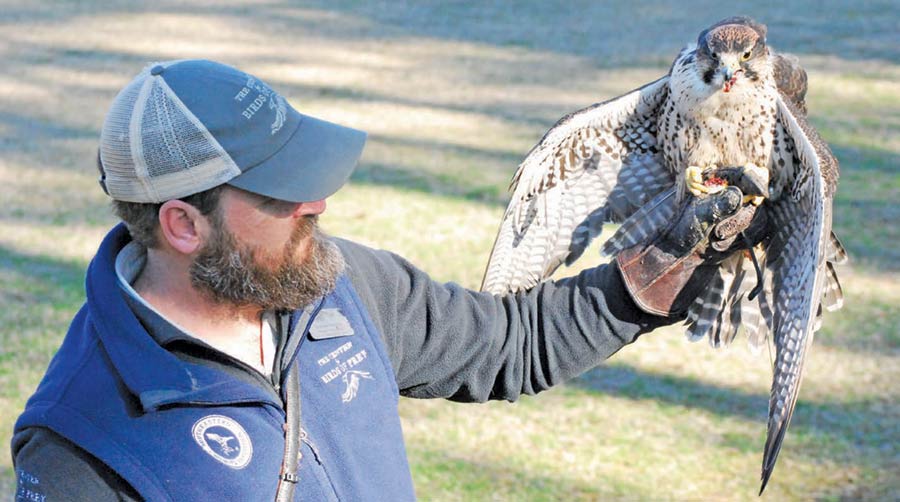
When tropical weather begins brewing in the Atlantic Ocean, Stephen Schabel tunes in for updates the way most of us do here on the coast – albeit for a slightly different reason. Schabel, director of education and husbandry at The Center for Birds of Prey, is tasked with keeping all birds safe in the event of a hurricane. Whether the storm on the water is a Category 1 or Category 5, proper measures must be taken to ensure that the birds are protected, protocol is smooth and feathers are far from ruffled.
Like most savvy Charlestonians who’ve been through tropical storms and hurricanes, Schabel believes in the art of preparing without panicking. A lifelong Lowcountry resident who experienced Hurricane Hugo as a high school freshman, he makes decisions based on forecast models and looks for the “least dramatic response.”
“We want to keep the birds safe, but moving them is stressful for them,” he explained. “We always want to treat them with consideration and care.”
At the beginning of hurricane season – June 1 of each year – Schabel and other staff members gather together to review the Center’s emergency plan. Both former and new volunteers are contacted, as well as facilities that could serve as temporary homes for birds in the event of a catastrophe. If a storm does start heading for South Carolina, the team pays close attention to all nightly updates. Meetings are held each morning to continually evaluate the timeline. If things change on a dime, as they often do with coastal weather, birds are ready to go (or stay) at a moment’s notice. A kennel is prepared for each bird, but Schabel said actually loading the birds into a vehicle and heading to another facility has not happened throughout his tenure of 16 years. Still, he’s grateful to the sites that would be able to host birds if necessary. Inland evacuation sites include towns such as Cameron and Orangeburg, mostly in empty warehouses.
“Florence had us concerned with the early Category 4 prediction,” Schabel said. “We could have packed up the birds and moved them inland when the governor issued an evacuation order. But, instead, we got into preparatory mode: calling the sites, renting vehicles, organizing the team. There was a lot of waiting in this storm’s case.”
So where did the birds go during Hurricane Florence, since they did not have to venture all the way to the middle of the state? Fortunately, the Center’s very own oil-spill facility on-site can withstand storms with up to 130 mph winds. For the last few storms – Matthew, Irma and Florence – birds have been taken from their outdoor enclosures, placed into the carriers and moved inside the building to rest in silence and darkness until the storm has passed. Generators ensure that food for the birds (mice, rats, chickens) is kept frozen even during a power failure. Schabel said he’s grateful things haven’t been worse and that any damage to the Center has been minor.
“We’re on the coast where even a Category 2 storm is no small thing,” he pointed out. “We’ve been very lucky.”
In addition to lauding the many volunteers who chip in before, during and after a weather disruption, Schabel and the entire staff is heartened by how bird lovers and friends of the Center always get in touch to ask how the birds fared.
“I had probably 15 messages this time from people who deal with birds in terms of education or medicine,” he remarked. “They reach out to offer help from all over the United States.”
By Denise K. James

Leave a Reply